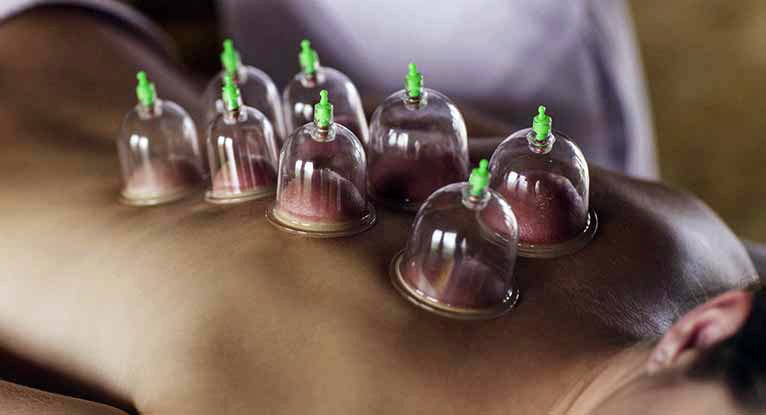By Charlotte Savela
If you watched the 2016 Summer Olympics, you probably saw circles on the skin of many athletes and maybe heard these attributed to the ancient technique of “cupping”. Contrary to popular opinion, the technique used is actually called myofascial decompression (MFD).
MFD differs from passive “traditional cupping” as the cups (negative pressure) are not placed on meridians or acupuncture points. Instead, MFD involves specific active movement patterns while the cups are on the body, followed by neuromuscular re-education exercises.
Myofascial decompression was developed by Dr. Chirstopher DePrato, an associate professor at the University of San Francisco. He is currently studying this technique for research publications, but this may take years. Research takes time to investigate the physiological effects, data collection and analyse the information.
The purpose of MFD is to correct movement inefficiencies, promote healing and decrease pain.
When injury or strain happens, the body starts to produce new tissue that does not move properly and is called an adhesion (scar tissue). The negative pressure cups lift the tissue (confirmed by MRI) instead of compressing the tissue. The “pull” of the suction cups increases blood flow to promote tissue healing and helps the tissue move more freely, increasing the person’s range of motion.
It is a relatively safe treatment and can be used for muscle strains, contractures and for biomechanical restrictions.
We use MFD at Accelerated Physio as it is an active treatment modality that is based on assessing and correcting movement inefficacies. Our patients are active participants in the treatment as neuro muscular re-education is incorporated. In most cases, the patient observes improvements in their movement patterns and reports a decrease in pain when re-assessed post treatment.
We also use this technique at Accelerated Physio for assessment. The discoloration from the cups can be an indication of the health of the tissue beneath. Darker marks observed, mean more tissue stagnation (lack of blood flow) due to the build-up of adhesions.
As a registered physiotherapist, I am always interested in learning new techniques to help my patients return to their function and improve their performance. Observing my personal gains of shoulder range of motion while attending the course with Dr. DePrato made me a believer.
MFD is not indicated for every patient. It is a great treatment option for individuals with pain and movement dysfunctions or for those who did not respond well to other therapies.
For more information or to schedule an appointment, please call 705-523-2471 or email [email protected].
Charlotte Savela is a registered physiotherapist and the owner of Accelerated Physio and Sports Rehab in Greater Sudbury.
